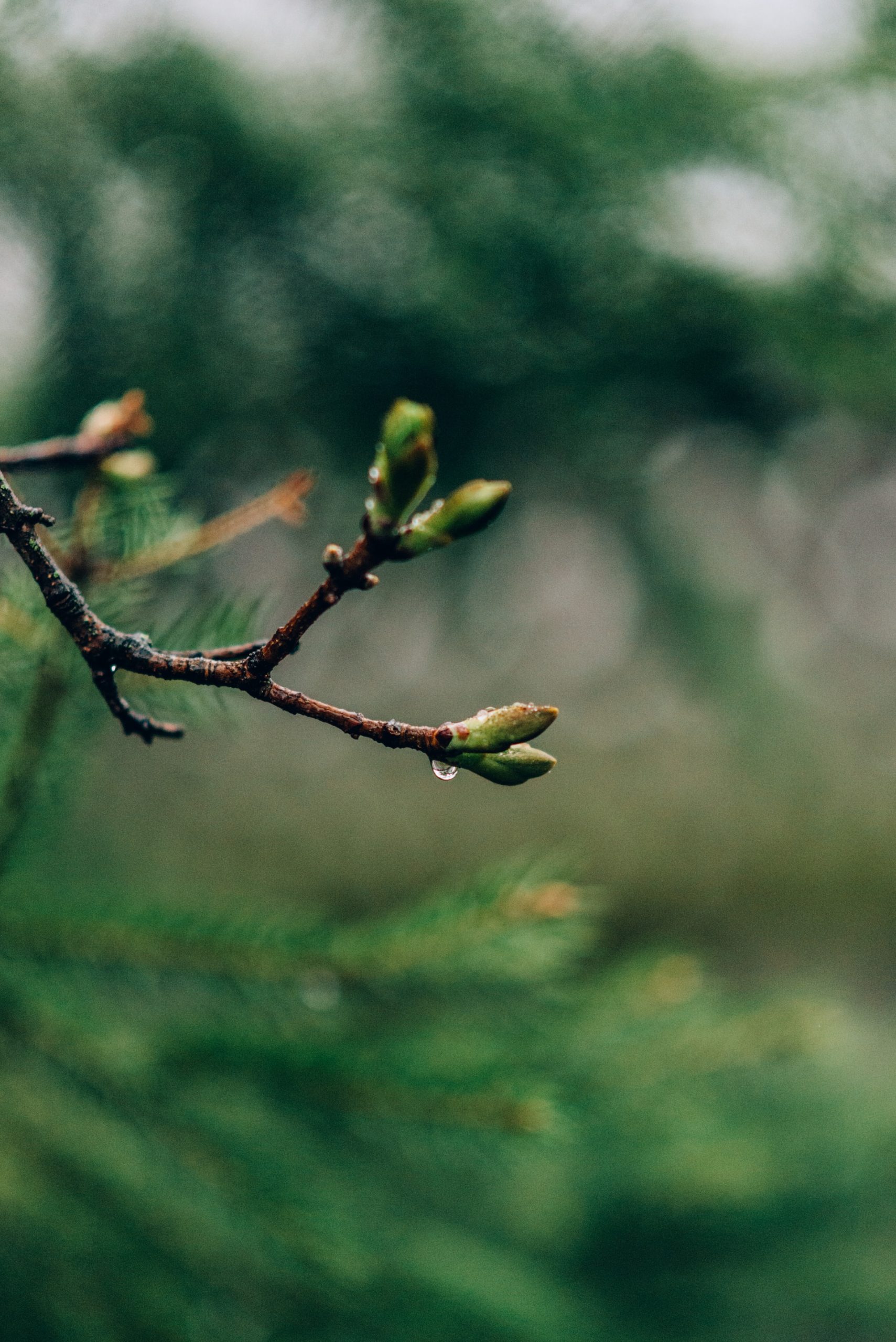by Senior Education Specialist Judy Elliott
April, like March, is a month of ‘wild weather’, alternating from moisture-laden snow, drying winds, and even rain/snow mixes (yes, Denver does experience rain at times) to a range of temperatures between 65 degrees in the daytime to 35 degrees nighttime.
If you think that sounds confusing for us, imagine the delicate dance that our trees, perennials and early-season veggies must navigate to survive. Perennials and trees (including fruit trees) have a ‘built-in’ time clock that responds to increasing daylight hours, sunlight intensity, and (for fruit trees), a number of hours below freezing for fruit buds to appear. Once those swelling buds open and leaves unfurl, it almost is a signal for more unsettled weather to descend.
One of the challenges in April appears to be our warming climate, and, concurrent increasing drought situation. It’s all too easy to be lulled into a false sense of complacency regarding our changing climate, especially if tree limbs are bowed down with spring snows. For the entire year, Denver receives between 9 – 11” of water but in the past few years, strong winds & rapidly warming temperatures in spring have made less of that available. With greenery emerging daily our thoughts turn to the process of ‘growing’.
April is the month to ‘GROW.’
G |Grow to fit the season
Understand the variety of needs of cool-season seeds + transplants.
- Note: Cool-season crops include peas, lettuce, spinach, radish, cilantro, parsley, chard, carrots, broccoli, cabbage, cauliflower, turnips) while warm-season seeds & transplants include squash, corn, beans, pumpkins, tomatoes, basil, peppers, eggplants, cucumbers.
Denver’s last spring frost can be as late as May 15. Don’t plant warm-season crops until nighttime temperatures are between 55 & 60 degrees.
- For fast-growing cool-season seeds, such as salad greens, utilize ‘succession planting’, in which small quantities of seeds are planted every few weeks until mid-May, to extend the planting/harvesting window.
Join the DUG network at community.dug.org to connect with other gardeners on their growing journeys! This platform is meant as a ‘give and take’ with our community offering their advice and posting challenges.
- While you’re there, check out our upcoming classes!
R| Respect the soil
Set up a system of ‘internal pathways’, with 3 ‘ wide planting areas separated by designated walkways (about 2’ wide) to prevent soil compaction within the growing areas.
- Prior to planting, dig 1.5 – 2” of plant-based compost (not manure) into planting areas. Walkways don’t need to be amended.
Plan for the inevitable ‘spring into summer’ of warm weather by having straw mulch available to place around cool-season crops.
O | Own and understand the ongoing commitment of gardening
A successful garden requires constant nurturing, not just watering.
- Plant only what you can care for or use.
Consider the benefits of sharing garden care with another gardener.
W | Welcome the wonder + joy of growth
Plant flowers and herbs such as zinnias, marigolds, chamomile, fennel + cilantro which produce a sense of riotous color, and also flowers that entice beneficial insects to visit.
- Flowers have a calming effect on our senses and cause us to ‘pause’, bend down and ‘stay awhile’, noticing changes in veggie growth that may signal the need to handpick that ‘caterpillar’ before it munches the entire leaf.
Appreciate not only the harvest but also the learning steps along the way.
Garden Tip
Know when it’s time to ‘dig your soil’.
Don’t rely upon daytime temperatures as a sign of when to begin your gardening work. For a more reliable measure that deals with soil moisture:
- Use a hand trowel or regular shovel to dig down several inches and obtain a small quantity of soil
- Make a tennis ball-sized mound with the soil
- Drop the ‘soil ball’ from about a foot in height
- If it stays together as a ‘ball’, it’s not time to dig your soil. Wait several days and try the test again
- If it breaks apart (shatters), go ahead and ‘dig in’
- Our soils are usually high in clay, warm slowly, and have very tiny soil particles. If you dig your garden soil too early (i.e., the soil still stays together as a ‘ball’) it may dry like an adobe brick and make it difficult for smaller seeds to germinate
Remember, patience really does pay off!

